It does not matter if you are cutting your parts with a state-of-the-art laser or hand-holding a plasma torch, cut quality and consistency will affect downstream processes. A perfectly square edge from your fiber laser sounds good in theory, but what will you do when your assembly workers start getting cut from the sharp edges?
Let’s say your largest customer just added a deburring/edge quality requirement on all of their prints. Do you have enough capacity to accommodate this request? Will the added processing cost price you out of the market? These are just two examples of how times are changing, and why you need to start planning for the continuing trend demanding fully deburred parts.
For many companies, hand deburring has been how they have always done it. Starting with just giving the machine operator something to do while he is waiting for the machine to finish cutting. Then as business grows, someone is hired to hand grind these parts. Now, this gradual problem is continually being solved by just hiring another person.
For companies who have already surpassed this problem and invested in some level of automated deburring, is your existing machine/process still the best solution for your current needs? Maybe your current deburring machine was selected for some large parts being cut with oxy-fuel, but now you added a high definition plasma table cutting thousands of parts per day that are too small to run in your existing equipment.
Needs change and technology improves, don’t get left behind.
1. Hand Deburring
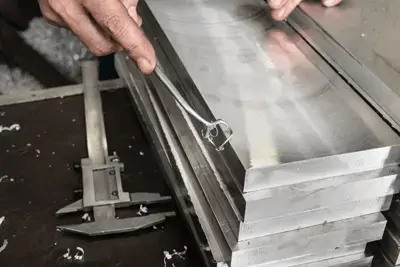
This doesn’t sound like an improvement, but will likely be your first step if you are just starting out. Be aware of operator fatigue and repetitive motion injuries. If this is your current solution, be sure to optimize the environment and ergonomics for your employees. Just a little investment can have huge returns in capacity and throughput.
Raise the stack of parts to avoid bending/twisting, or review the operator’s movements to ensure they only touch the part once. Make sure they have the right tool for the job: a 9” angle grinder may handle everything, but is unwieldy if the parts are too small to stay put. Additionally, find a happy balance between running an abrasive disc to the backing so you “get every penny out of that consumable”, and maintaining the high cutting rate with minimal operator input which results in shorter processing times (but may look like more money in the trash to the casual observer).
2. Vibratory Tub/Tumbling
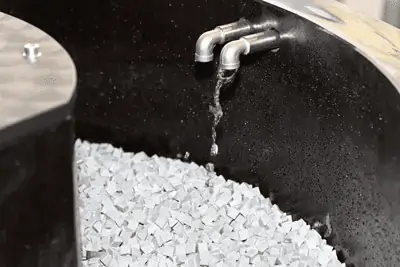
This technology has a very low barrier to entry (it’s cheap) and is quite versatile (lots of abrasive options). As such, this method of deburring should not be overlooked; it is a great solution for parts that are typically difficult to deburr by hand (either small or with complex geometry). A variety of tumbling media may be used including abrasive steel, ceramic, organic materials, and plastic. The tub vibrates, creating a circular motion that drives the parts down into the tub and softens the edges. Before adding this to your process, be sure the long cycle times, limited cutting ability, maximum part size, and difficult unloading are factored into your decision.
3. Widebelt Sander
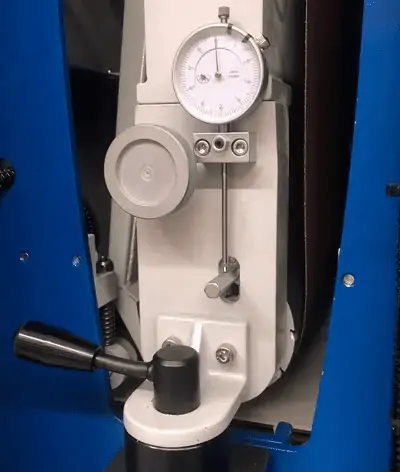
A wide belt sander has been the go-to automated deburring solution for large parts over the last few decades. Most of these machines were built to run 36” wide parts, with some cheaper options down to 6” wide, or more expensive solutions up to 80” wide. An abrasive belt head is awesome for grinding the part surface and removing any vertical burrs (protruding up from the material surface), but can leave sharp edges due to the burr rolling over edges and into holes instead of being completely removed.
Most starter machines only have 1 sanding head to keep costs low, but the quality was “good enough” and the streaky finish provided by the burr-damaged abrasive belt was not a problem. However, as customers’ requirements increase, some parts may need a secondary process to improve the deburring quality, or a second pass through the machine (using a new abrasive belt) to apply a beautiful straight grain #4 finish. These machines will either use a dry process (requiring dust collection) or a wet process (which is a great option for mixed metals).
The best value in the industry has to be Apex Machine Group’s 1375MW-D, a 13” wide single drum head widebelt wetworking machine.
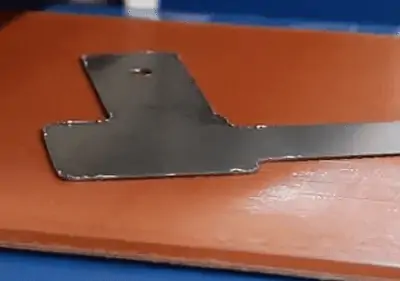
Today, it is more common to see multiple abrasive heads in one machine to grind burrs and finish the parts in a single pass. Otherwise a combination of abrasive belts and straight brushes is used to achieve a nicely deburred part while still providing a straight grain finish. Be sure to check that the minimum part length isn’t going to be an issue. There are machine options and creative solutions to this issue but are highly application specific.
4. Non-Linear Brush Technology
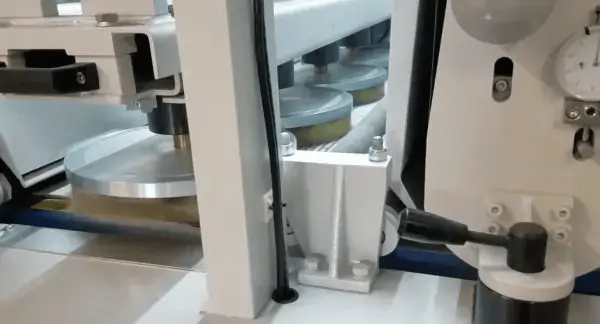
If you are looking for the best deburring results in a feed-through machine, non-linear brushes will provide the best results available. A wide belt or linear brush is placed perpendicular to the feed direction and is either spinning with or against the feed, which is most effective on leading or trailing edges, and minimally effective on all other edges. By utilizing some sort of rotary action, the abrasive is applied to the part at every angle as it passes through the machine, which ensures a consistent and uniform action on every edge and around every hole, especially while deburring sheet metal.
Machine suppliers have quite a few solutions using this brush deburring action; each one with their own pros and cons. Many abrasive options exist for this type of head, but as with any brush, it will be less aggressive than a widebelt sanding head utilizing a rubber contact drum.
Luckily, a few machine suppliers have combined the grinding/finishing capabilities of a drum head with the deburring quality of a non-linear brush into a single machine.
One of the most versatile deburring and finishing machines available is Apex Machine Group’s 2052M-DSSDc, which is a 52” wide machine using a drum to grind the heavy burrs, followed by 2 rows of oscillating discs for a completely deburred part, and ending with another widebelt drum head to apply a final straight-grain finish. Not only can this machine run 4’ wide parts, it can run very small parts due to the special conveyor belt.
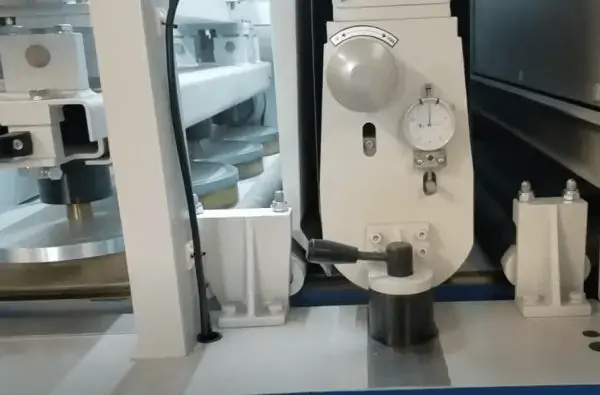
5. Custom Robotic Integration
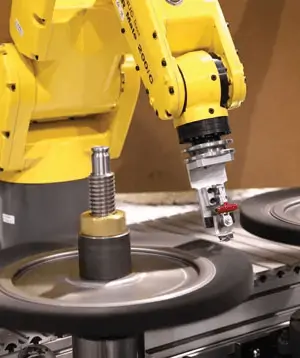
If an “off the shelf” piece of equipment isn’t the solution you are looking for, perhaps a fully customized deburring cell will be the answer you are looking for. Finding a robotic integrator that specializes in deburring may be able to design a complete solution for needs. This will be some combination of off-the-shelf equipment (robotic arm, back stand grinder, robot-held tools, etc.) that the integrator will connect and program to work in harmony. You can either bring the abrasive/tool to the part, or bring the part to the abrasive/tool. Either way, this will not be a small effort and likely the most expensive option provided.
If you’d like to learn more about robotic deburring, take a look at this article in Canadian Metalworking.
Upgrade Your Deburring and Finishing Quality Today
Now is the perfect time to invest in an automated abrasive solution to make your deburring operations faster, more consistent, and efficient. Apex Machine Group is proud to offer a wide range of automated finishing and deburring equipment, so visit apexmachinegroup.com to see who we are and what we do. If you’d rather skip through all the keyboard research and reading, give us a call at 1-855-500-2739 or send us an email to info@apexmachinegroup.com.
We look forward to hearing from you!
